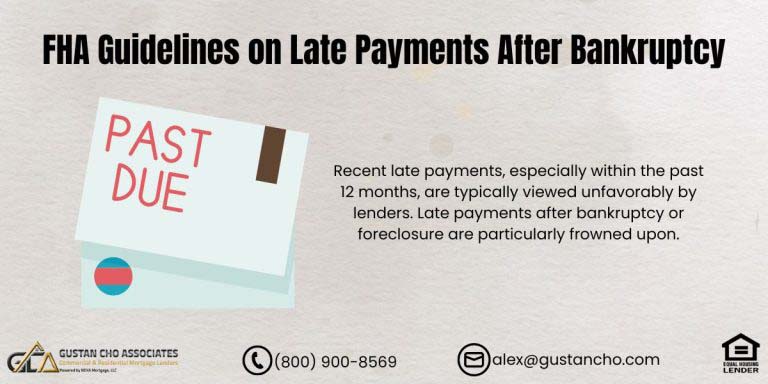Student Loans Mortgage Guidelines: Qualify for a Mortgage Even with Student Debt
Are you worried your student loans might stop you from buying a home? Don’t worry—you’re not alone. Student loan debt poses one of the greatest obstacles for homebuyers in today’s market. But here’s the good news: with the right mortgage program and guidance, you can qualify for a mortgage even if you have large outstanding student loans. At Gustan Cho Associates, we specialize in helping borrowers navigate student loans and get approved for a mortgage.
In this blog, we’ll explain student loans mortgage guidelines for 2025 and show you how to manage student debt to become a homeowner.
Why Student Loans Are a Big Deal in the Mortgage Process?
Consistent with student loans mortgage guidelines, student loans directly impact your debt-to-income ratio (DTI), a major factor mortgage underwriters use to decide if you qualify for a mortgage. The DTI ratio assesses your monthly obligations (such as student loans, credit card debts, auto payments, etc.) in relation to your monthly earnings. The higher your DTI, the harder it can be to qualify for a mortgage.
If you’re on a deferred payment plan or using an Income-Based Repayment (IBR) plan, how your lender calculates your monthly student loan payment can make or break your mortgage approval.
What’s New for 2025: Updates on Student Loans Mortgage Guidelines
Student loans mortgage guidelines have evolved, and the rules for handling student loans in the mortgage process have become more flexible. Here’s what’s new and important to know in 2025:
- FHA Loans and Income-Based Repayment (IBR) Plans: Based on student loans mortgage guidelines, FHA loans now allow borrowers to use their IBR payment—even if it’s as low as $0—instead of a percentage of the total student loan balance. This change opens the door for many homebuyers who previously couldn’t qualify.
- VA Loans Still the Most Lenient: VA loans remain the most flexible option for borrowers with student loans. In line with student loans mortgage guidelines, if your student loans are deferred for at least 12 months, they’re completely excluded from your DTI calculation. This gives veterans and active-duty service members a huge advantage.
- Conventional Loans: Aligned with student loans mortgage guidelines, Fannie Mae and Freddie Mac permit IBR payments for student loans, similar to FHA loans. However, they require stricter credit scores and DTI ratios than government-backed loans.
How Are Student Loans Calculated for a Mortgage?
Understanding how lenders calculate student loan payments is key to qualifying for a mortgage. Let’s dive into the specifics of different loan programs:
1. FHA Loans
- What They Use:
- If your student loan is on an IBR plan, your lender can use the payment reported on your credit report—even if it’s $0.
- Lenders will use 0.5% of the total loan balance if no payment is reported as your monthly payment.
- Example:
- Suppose you owe $50,000 in student loans. In that case, your lender will count $250/month (0.5% of $50,000) as your monthly payment unless you have documentation showing a lower IBR payment.
2. VA Loans
- What They Use:
- Deferred student loans are exempt if they’re deferred for at least 12 months.
- For active loans, lenders calculate 5% of the loan balance divided by 12 months or use the payment shown on your credit report if fully amortized.
- Example:
- If you owe $30,000, the monthly payment used in your DTI calculation would be $125/month (5% of $30,000 ÷ 12).
3. Conventional Loans (Fannie Mae and Freddie Mac)
- What They Use:
- Fannie Mae and Freddie Mac use your actual IBR payment can be used, even if it’s $0.
- If no payment is reported, lenders use 1% of the loan balance or documentation of a lower fully amortized payment.
4. USDA Loans
- What They Use:
- Lenders use the greater of the actual payment or 0.5% of the outstanding balance.
- Deferred loans are included in DTI unless a fixed repayment plan is in place.
How to Lower Your Student Loan Impact on Your Mortgage?
In accordance with student loans mortgage guidelines, if your student loans seem like a roadblock, don’t worry—there are strategies to reduce their impact on your DTI and improve your chances of getting approved.
Switch to an Income-Based Repayment (IBR) Plan
IBR plans to adjust your student loan payments based on your income. Your monthly payment could be as low as $0 if you’re on a low-income or moderate-income salary. FHA and conventional loans allow IBR payments to be used in DTI calculations.
Request a Fully Amortized Payment Plan
If your IBR payment is still too high, ask your student loan servicer for a fully amortized payment over an extended term (like 25 years). This can lower your monthly payment significantly. Make sure to get this in writing so your lender can use it in the mortgage process.
Refinance Your Student Loans
Refinancing can lower your student loan interest rate and monthly payment, freeing up room in your budget for a mortgage. However, refinancing federal loans into private loans may eliminate some benefits, so weigh your options carefully.
Real-Life Example: How We Helped Lisa Buy a Home
Lisa was a recent college graduate with $100,000 in student loans. She wanted to buy her first home but was worried her student loans would prevent her from qualifying. After talking to Gustan Cho Associates, we recommended she switch to an IBR plan that reduced her student loan payment to $50/month.
Here’s how it worked:
- Before the IBR plan, her lender calculated 0.5% of $100,000 ($500/month) in her DTI ratio.
- With the IBR plan, her monthly payment dropped to $50, and that’s what the lender used in her DTI calculation.
Lisa qualified for an FHA loan and is now a proud homeowner.
Qualify for Student Loan Forgiveness? See If You’re Eligible Now
Apply Online And Get recommendations From Loan Experts
Why Work with Gustan Cho Associates?
Gustan Cho Associates specializes in helping borrowers with high student loan balances qualify for a mortgage. Here’s what sets us apart:
- No Lender Overlays: We follow only agency guidelines, which means we don’t add extra restrictions like other lenders.
- Expertise in Student Loans: Our team has deep experience structuring loans for borrowers with student debt. We are experts when it comes to student loans mortgage guidelines.
- Flexible Options: We offer FHA, VA, USDA, and conventional loans tailored to your situation.
Ready to Buy a Home?
Don’t let student loans hold you back from your dream of homeownership. Gustan Cho Associates are experts when it comes to student loans mortgage guidelines. We’re here to guide you through the process and find the best mortgage solution. Whether you’re working with an IBR plan, deferred loans, or a large student loan balance, we have the expertise to help you succeed.
If you have any questions about student loans mortgage guidelines, you may contact us today at 800-900-8569 or email us at gcho@gustancho.com to start your journey toward homeownership. We’re available 7 days a week, including evenings, weekends, and even holidays.
Frequently Asked Questions About Student Loans Mortgage Guidelines:
Q: Can I Get a Mortgage if I have Student Loans?
A: Yes! You can qualify for a mortgage even with student loans. Programs like FHA, VA, and conventional loans have guidelines that help borrowers with student debt, including those on Income-Based Repayment (IBR) plans.
Q: How do Student Loans Affect my Debt-to-Income Ratio (DTI)?
A: Student loans are factored into your debt-to-income (DTI) ratio, which assesses your monthly obligations against your monthly earnings. The calculation depends on the loan program and your repayment plan, such as IBR or deferment.
Q: What are the Best Mortgage Programs for People with Student Loans?
A: FHA, VA, and conventional loans are great options. FHA loans now accept IBR payments, and VA loans exclude deferred student loans from DTI calculations if deferred for at least 12 months.
Q: Can I Qualify for a Mortgage if my Student Loans are Deferred?
A: Yes, but it depends on the loan program. Student loans mortgage guidelines states, FHA and USDA loans use 0.5% of the loan balance for DTI calculations, while VA loans exclude deferred student loans deferred for 12 months or more.
Q: Can I Use my IBR Payment to Qualify for a Mortgage?
A: Absolutely! FHA and conventional loans now allow lenders to use your IBR payment, even if it’s as low as $0, in your DTI calculation.
Q: How Does Refinancing my Student Loans Help me Get a Mortgage?
A: Refinancing may decrease your monthly payment, lower your debt-to-income ratio, and enhance your likelihood of getting approved for a mortgage. However, consider the pros and cons, especially if you’re giving up federal loan benefits.
Q: What if my Student Loans are in Forbearance?
A: Lenders will still count a hypothetical payment in your DTI. This is usually 0.5% of the outstanding balance for FHA and USDA loans. Conventional loans might use 1% if no payment is reported.
Q: How do VA Loans Handle Student Loans?
A: Per student loans mortgage guidelines, VA loans are the most flexible. They exclude deferred student loans from DTI if deferred for at least 12 months. For active loans, they calculate 5% of the loan balance divided by 12 or use the payment reported on your credit report.
Q: Can I Qualify for a Mortgage with Large Student Loans?
A: Yes! With the right plan, like switching to an IBR plan or using a fully amortized payment schedule, you can reduce the impact of your student loan and qualify for a mortgage.
Q: Why Should I Work with Gustan Cho Associates if I have Student Loans?
A: Gustan Cho Associates specializes with student loans mortgage guidelines. We have no lender overlays, meaning we follow agency guidelines and offer flexible options to get you approved for a mortgage.
This blog about “Student Loans Mortgage Guidelines on Home Loans” was updated on February 11, 2025.
Struggling with High Interest Rates? See If You Qualify for Student Loan Refinancing
Apply Online And Get recommendations From Loan Experts










